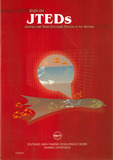Study on Juvenile and Trash Excluder Devices (JTEDs) in Vietnam
Share
| dc.contributor.author | Chokesanguan, Bundit | |
| dc.contributor.author | Ananpongsuk, Suppachai | |
| dc.contributor.author | Siriraksophon, Somboon | |
| dc.contributor.author | Wanchana, Worawit | |
| dc.contributor.author | Long, Nguyen | |
| dc.date.accessioned | 2019-09-24T07:16:40Z | |
| dc.date.available | 2019-09-24T07:16:40Z | |
| dc.date.issued | 2003 | |
| dc.identifier.citation | Chokesanguan, B., Ananpongsuk, S., Siriraksophon, S., Wanchana, W., & Long, N. (2003). Study on juvenile and trash excluder devices (JTEDs) in Vietnam. Samut Prakan, Thailand: Training Department, Southeast Asian Fisheries Development Center. | en |
| dc.identifier.isbn | 9749509528 | |
| dc.identifier.uri | http://hdl.handle.net/20.500.12067/579 | |
| dc.description.abstract | This SEAFDEC Training Department has carried out series of experiments to reduce the level of unwanted catch including juvenile and trash fish. SEAFDEC planned to conduct the experiments using JTEDs installed in bottom trawl used in the Southeast Asia region. This paper deals with the third experiment conducted in Vietnam to study the reduction of unwanted catch using a rigid sorting grid with differences bar spaces. The results indicated that the escape percentage using the rigid sorting grid was in a range from 12-28% or trash fish, and from 10-40% for other kinds of fish. This suggests that the rigid sorting grid has a better separating performance than that of rectangular and semi-curved JTEDs for reducing unwanted fish. | en |
| dc.format.extent | 20 p. : ill. | en |
| dc.language.iso | en | en |
| dc.publisher | Training Department, Southeast Asian Fisheries Development Center | en |
| dc.title | Study on Juvenile and Trash Excluder Devices (JTEDs) in Vietnam | en |
| dc.type | Book | en |

